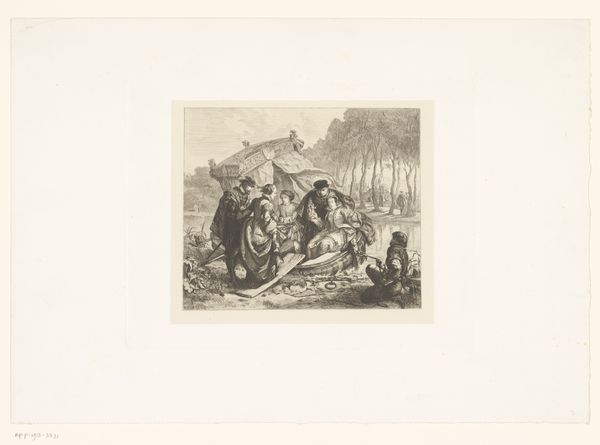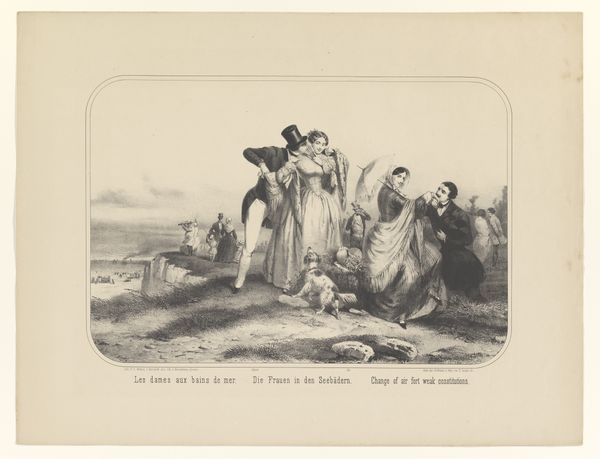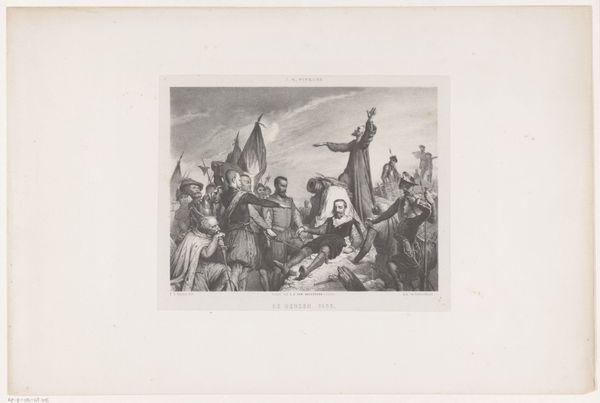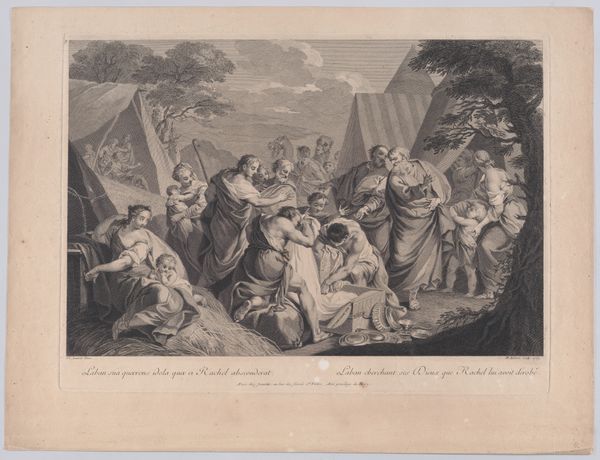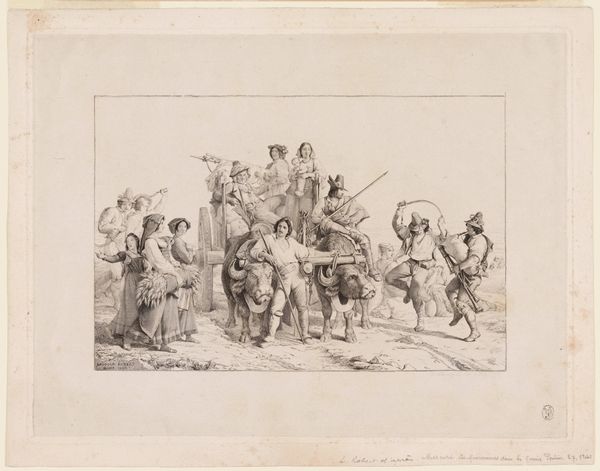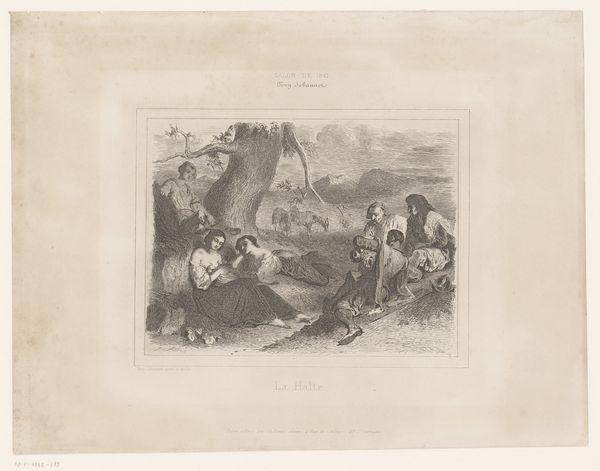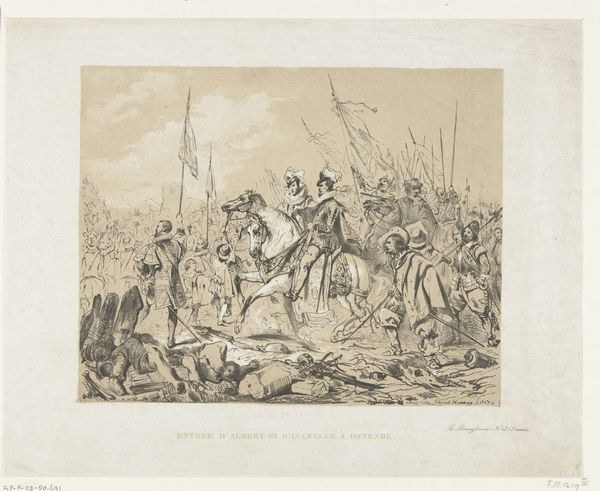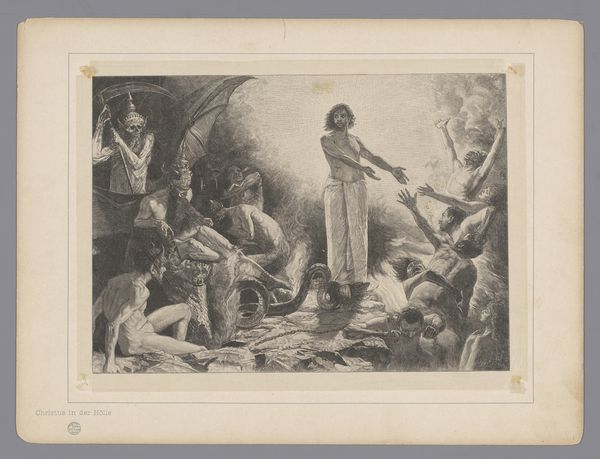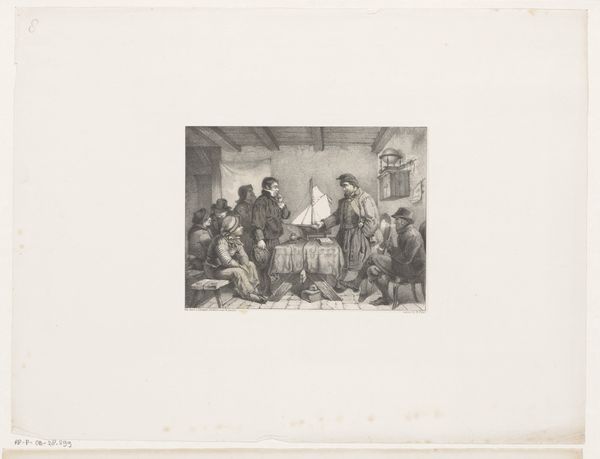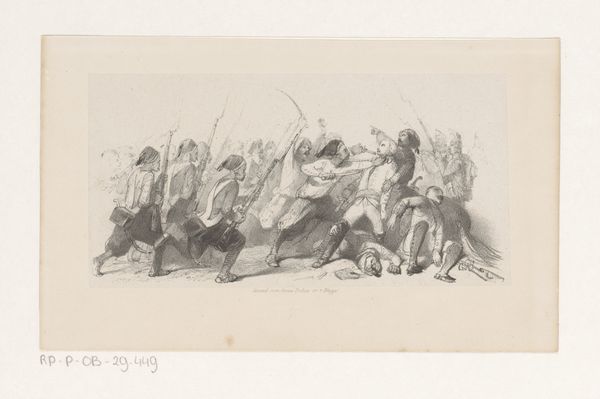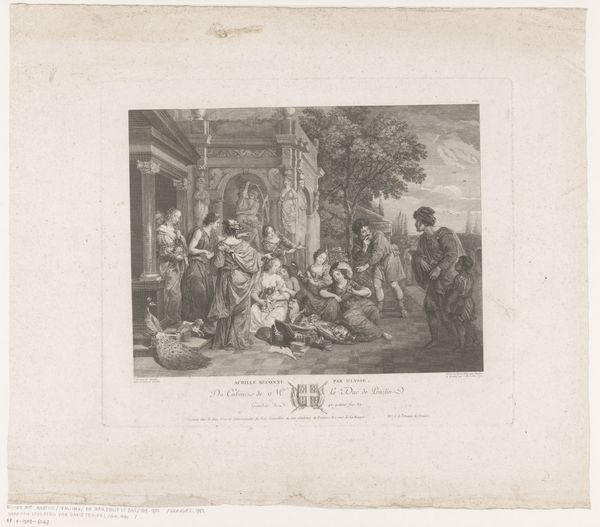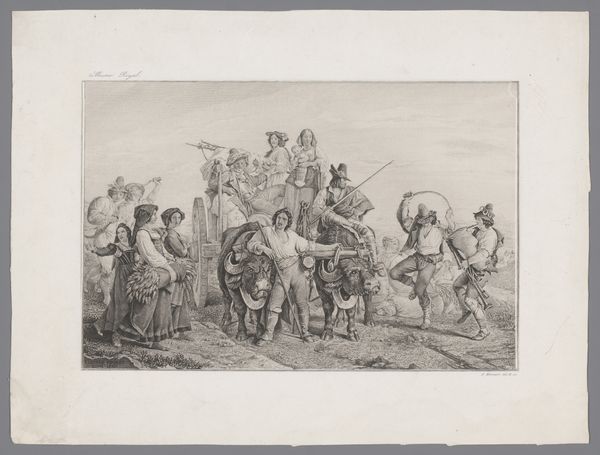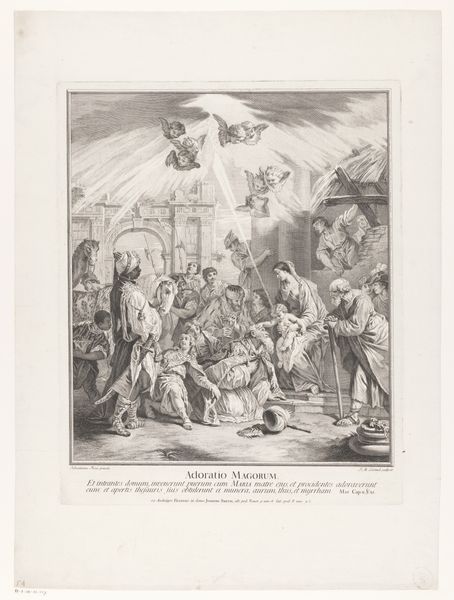
print, engraving
#
narrative-art
# print
#
old engraving style
#
figuration
#
history-painting
#
engraving
Dimensions: height 184 mm, width 272 mm
Copyright: Rijks Museum: Open Domain
Curator: Welcome. We are standing before "Johannes de Doper predikend," or "John the Baptist Preaching," an engraving by Anthonie van Volkom, made sometime between 1847 and 1865. Editor: The engraving is incredibly detailed! The whole scene feels staged in a sort of theater where you can clearly see both John, but also everyone involved as he seems to touch peoples' lives in different ways. It certainly evokes a solemn, attentive mood. Curator: The print belongs to a broader trend of the 19th century where we see the rise of religious revivalism alongside print culture. Engravings like this allowed for wider dissemination of religious narratives. Van Volkom sought to capitalize on the public's hunger for easily accessible, yet artistically rendered biblical scenes. Editor: I see many symbolic details—the posture of John for example, as he carries that cross; the man prostrated before him, the palm tree representing life. They all suggest the transformative power of repentance. Does it indicate an actual spiritual awakening amongst its intended viewers? Curator: It reflects and influences that awakening, shaping public sentiment by presenting John the Baptist as an important figure whose ministry impacts everyone who hears it. This representation reinforces the Protestant values that dominated the 19th-century Dutch society, focusing on the accessibility and interpretability of the scripture. Editor: Absolutely! Also consider the cultural memory around the desert and the figure of the prophet. His stern gaze is set over the crowd in almost every image and reminds audiences of the continuity of God's work throughout history, as represented through powerful images. Curator: True. The image serves as a reminder of both social responsibility and spiritual calling, as it reflects and appeals to the 19th-century sentiments. Its production and reception also show us how cultural artifacts become social rituals. Editor: I'm walking away from this experience having noticed an interesting tension between artistic and religious expression—something worth thinking more about in other similar works. Curator: I think the visual dynamics displayed give us new insights into how religious teachings were popularized during times of societal change.
Comments
No comments
Be the first to comment and join the conversation on the ultimate creative platform.
